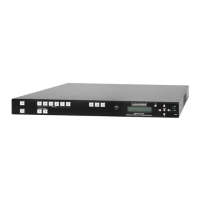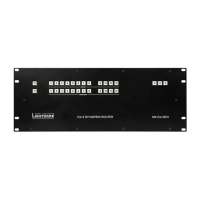MMX4x2 series – User's Manual 110
Addition and Subtraction (Cycle Method)
The value of a numeric variable can be increased by adding a positive value or it can be decreased by adding
Command and Response
ç <loc>:cycle(<operand>;<min>;<max>)
æ <loc>:cycle
Parameters
Parameter Parameter description
<loc> The location of the variable
1-30
<operand> The value that is added to the variable
Integer
Negative value is also accepted
<min> The lowest allowed value (optional)
Integer
Negative value is also accepted
<max> The highest allowed value (optional)
Integer
Negative value is also accepted
Examples
Change messages (CHG) can be seen after each response for the better understanding, which is not part of
the command, but it can be set as described in the Subscription section.
ç
æ
ç
æ
æ
ç
æ
æ
ç
æ
æ
ç
æ
æ
ç
æ
ç
æ
æ
ç
æ
æ
ç
æ
æ
Value Change with Intervals (Case)
Command and Response
ç <loc>:case(<min> <max> <val>;)
æ <loc>:case
Parameters
Parameter Parameter description
<loc> The location of the variable
1-30
<min> The lowest value of the interval
Integer
<max> The highest value of the interval
Integer
<val> The new value that will be valid if the current value is in the interval
Integer
The parameters are divided by a space character, and the interval groups are divided by semicolon. Up to 16
Examples
ç
æ
A typical example when two different ranges of values have to meet:
Outgoing values: between 0 and 100 (e.g. the controlled device accepts these values).
The command looks like:
ç
æ
Min Max New value
Case 1 1 10
Case 2 26 20
Case 3 30
Case 4 76 100 40
101
Case 6 126 60
Case 7 70
Case 8 176 200 80
Case 9 201 90
Case 10 226 100

